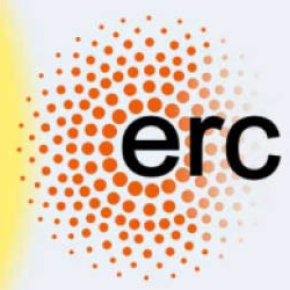ACTUALITES
Dans cette rubrique sont regroupées quelques faits marquants qui se sont déroulés dernièrement au laboratoire (séminaires, publications importantes, parution de livres, colloques...).

Félicitations à Olivier Bénichou et Aurélien Grabsch, chercheurs au LPTMC, pour l'obtention d'un financement ERC Synergy pour leur projet UniCIPS, porté conjointement avec Kirone Mallick (IPhT, CEA Saclay) et Benjamin Doyon (King's College London)!
Le projet UniCIPS vise à découvrir une loi universelle décrivant le comportement des systèmes de particules en interaction lorsqu’ils sont hors équilibre, c’est-à-dire lorsqu’ils échangent en continu matière ou énergie avec leur environnement. Ces systèmes, bien qu’omniprésents, restent aujourd’hui mal compris. Les chercheurs d’UniCIPS s’appuient sur des modèles simples, comme le processus d’exclusion symétrique (SEP), pour explorer les mécanismes fondamentaux du transport et des corrélations entre particules. Ils ont effectué une percée récente, qui a révélé, pour le SEP, une équation compacte et fermée permettant de décrire ces corrélations, simplifiant radicalement un problème jusque-là inextricable. Le projet ambitionne d’étendre cette découverte à tous les systèmes, qu’ils soient diffusifs, balistiques ou de dimension supérieure, afin d’établir un cadre théorique unifié de la physique hors équilibre. Porté par une équipe internationale alliant expertise en physique statistique, intégrabilité et hydrodynamique, UniCIPS pourrait transformer la compréhension du transport collectif et ouvrir de nouvelles perspectives pour la science des systèmes complexes.

Davide est à présent maître de conférences SU dans notre laboratoire. Il s'intéresse aux processus stochastiques, à la théorie statistiques des champs et aux matrices aléatoires. Bienvenue au LPTMC !
Julien Brémont soutiendra sa thèse intitulée "Exploration et vieillissement de processus stochastiques non-Markoviens" le jeudi 3 juillet à 14h dans l'Amphi 15. Elle a été réalisée sous la direction d'Olivier Bénichou et de Raphaël Voituriez.
Louise Delzescaux soutiendra sa thèse intitulée "Étude des membranes polymérisées à l'aide du groupe de renormalisation perturbatif et non-perturbatif" le mardi 1er octobre à 14h dans l'Amphi 25. Elle a été réalisée sous la direction de Dominique Mouhanna.
Actualités
-
11/2025 ERC Synergy pour Olivier Bénichou et Aurélien Grabsch avec le projet UniCIPS
Félicitations à Olivier Bénichou et Aurélien Grabsch, chercheurs au LPTMC, pour l'obtention d'un financement ERC Synergy pour leur projet UniCIPS, porté conjointement avec Kirone Mallick (IPhT, CEA Saclay) et Benjamin Doyon (King's College London)! Le projet...
-
09/2025 Bienvenue à Davide Venturelli, nouveau maître de conférences au LPTMC
Davide est à présent maître de conférences SU dans notre laboratoire. Il s'intéresse aux processus stochastiques, à la théorie statistiques des champs et aux matrices aléatoires. Bienvenue au LPTMC !
-
Soutenance de thèse de Julien Brémont
Julien Brémont soutiendra sa thèse intitulée "Exploration et vieillissement de processus stochastiques non-Markoviens" le jeudi 3 juillet à 14h dans l'Amphi 15. Elle a été réalisée sous la direction d'Olivier Bénichou et de Raphaël Voituriez.
- Le livre de Nicolas Dupuis Field Theory of Condensed Matter and Ultracold Gases est présenté dans la nouvelle brochure "Condensed Matter Physics and Statistical Physics" publiée par World Scientific
-
09/2024 Soutenance de thèse de Louise Delzescaux
Louise Delzescaux soutiendra sa thèse intitulée "Étude des membranes polymérisées à l'aide du groupe de renormalisation perturbatif et non-perturbatif" le mardi 1er octobre à 14h dans l'Amphi 25. Elle a été réalisée sous la direction de Dominique Mouhanna.




